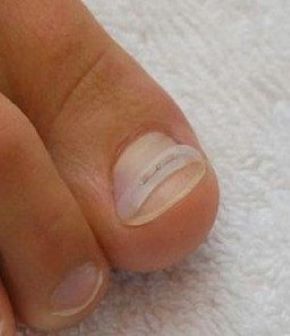Intoeing means that the feet curve inward instead of pointing straight ahead when walking or running. If your young child has intoeing, he or she will probably outgrow the condition naturally. You don’t need special shoes, stretching exercises or other treatments. By age 2, most children walk with their feet pointing in the direction they are heading.
Parents or other family members often worry about a child’s intoeing. They may believe the child or infant with intoeing will have permanent deformities as an adult. They may ask a doctor to “fix” the shape of their child’s feet or legs. But intoeing in children under age 8 usually corrects itself on its own without casts, braces or surgery. Infants and toddlers with intoeing don’t need shoes except for keeping their feet warm and protected from injury when outside. They can go barefoot without causing problems to the feet.
Severe intoeing may cause your child to stumble or trip. Other facts you should know include:
- Intoeing usually does not cause your child pain.
- Intoeing usually does not interfere with the way your child learns to walk.
- Intoeing has not been linked to degenerative arthritis in adulthood.
Intoeing Conditions
Tibial torsion is in-turning of your child’s lower leg (tibia). In the womb, the legs were in a confined position. Tibial torsion means they didn’t rotate into the turned-out position after birth. The condition improves without treatment, usually before age 4. Splints, special shoes and exercise programs don’t help. Consider surgery only if your child is at least 8 to 10 years old and the problem has persisted or causes significant walking problems.
Femoral torsion is the in-turning of your child’s upper leg (femur). It’s most apparent when he or she is 5 to 6 years old. Doctors don’t know why femoral torsion happens. It gets better without treatment. Modified shoes, braces and exercises don’t help. Consider surgery only if your child is older than 9 and has a very severe condition that causes a lot of tripping and an unsightly gait.
Bow legs and knock knees usually straighten out as your child grows. A wide range of knee alignment is normal in young children. Special shoes and wedges don’t help either condition. Flat foot is normal in infants and young children. The arch develops in your child’s foot until at least age 5. You don’t need special wedges, inserts or heels.
Metatarsus Adductus
Metatarsus adductus is a common birth defect in which a child’s feet bend inward from the middle of the foot to the toes. In severe cases, it may resemble clubfoot deformity. The condition improves by itself most of the time. That’s why most newborns with it are not treated until they’re at least several months old. Treatment, when necessary, usually involves applying casts or special corrective shoes and has a high rate of success in babies aged 6 to 9 months.






